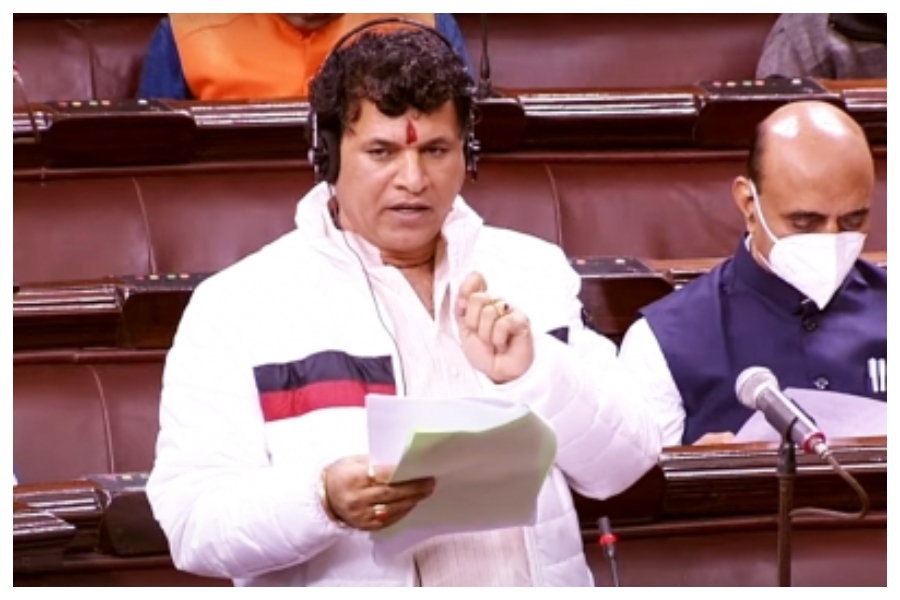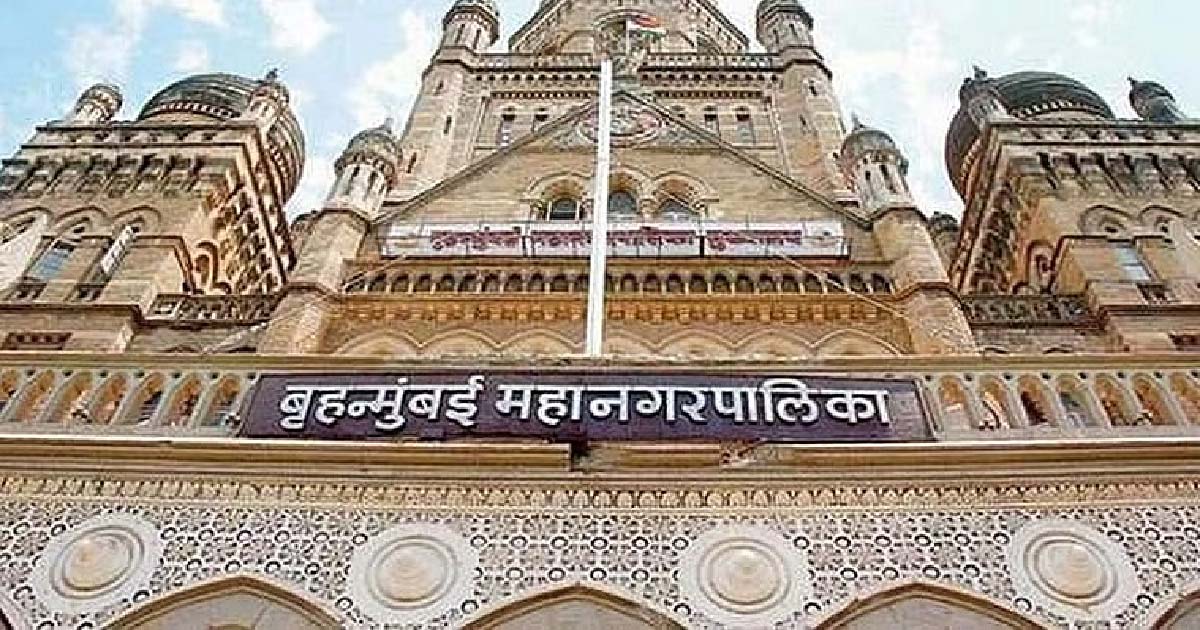National News
Committee on MSP after Assembly polls: Govt tells Rajya Sabha

Minister of State for Agriculture and Farmers Welfare Kailash Choudhary on Friday said that the Government is committed to setting up a committee to examine and provide legal guarantee of Minimum Support Price (MSP) once the Assembly elections in five states are over.
Responding to a question by Samajwadi Party Member Sukhram Yadav in the Rajya Sabha, the Minister said that the details of the proposed committee will be divulged once the government gets the Election Commission’s approval.
“As the Model Code of Conduct is in place in many states across the country ahead of the 2022 Assembly elections, the government has not announced the details of the committee,” Chaudhary said.
Later, Minister of Agriculture and Farmers Welfare Narendra Singh Tomar further said: “As the Prime Minister had announced we are committed to the issue of MSP. We were to form a Committee for fixing the MSP, but schedules for Assembly elections were announced.”
He also informed the House that the Agriculture Ministry had written to the Election Commission seeking its permission. Responding to the request, the EC said that the Ministry should wait for the elections before setting up the Committee.
Earlier, during Zero Hour, Shiv Sena MP Priyanka Chaturvedi raised the issue of Rehabilitation of the Kashmiri Pandits and said that only 15 per cent of the rehabilitation work to aid Kashmiri Pandits has been completed.
She also said that after the reading down of the Article 370 in Jammu and Kashmir, people from rest of the country have been allowed to buy land and other properties in the Union Territory. The Kashmiri Pandits have been struggling to take back their properties. She also urged the government through the Chairman to expedite the construction of transit accommodation units.
While raising the issue of unemployment in the country, the RJD lawmaker Manoj Jha said that now the time has come where the states and the Centre will have to work together on the National Employment Policy. “Across the party lines we have to work together. It is unfortunate that unemployment does not seem to be an issue even in the elections. We cannot ignore it any longer, we are sitting at the vortex of a volcano threatening to blow up any time now”, he said.
The National People’s Party Member Wanweiroy Kharlukhi, while raising the issue of inclusion of Khasi and Garo languages, said that his state Meghalaya does not have any recognised language for the last fifty years. He requested the government to include Khasi and Garo languages in the eighth schedule of the Constitution.
Maharashtra
Mumbai Civic Healthcare Goes Digital: BMC Launches Health Chatbot To Improve Access, Transparency And Efficiency

Mumbai, Dec 15: In a major step towards strengthening digital public healthcare, the Brihanmumbai Municipal Corporation (BMC) on Monday launched a health chatbot aimed at improving accessibility, transparency, and efficiency of healthcare services for citizens.
The digital service was inaugurated by State Minister for Information Technology and Cultural Affairs and Mumbai Suburban District Guardian Minister Ashish Shelar. The initiative marks another milestone in BMC’s ongoing efforts to integrate technology with civic health services.
As part of its digital transformation drive, the health chatbot will provide citizens with easy access to verified health-related information, including disease awareness, preventive care, public health campaigns, and details of nearby healthcare facilities. The chatbot is available on the mobile number 9892993368.
BMC Commissioner and Administrator Bhushan Gagrani said the initiative aligns with the civic body’s vision of making public health information easily accessible through digital platforms. Technology-driven services, he noted, will save citizens’ time and play a crucial role during healthcare emergencies.
Through the chatbot, citizens can access information on online OPD appointment registration, health certificates, licensing procedures, birth and death certificates, marriage registration, disability certificates, and maternity home licences. An online registration facility for health centres is expected to significantly reduce waiting times and improve convenience.
In the coming months, the chatbot will also provide details of state and central government health schemes. The BMC further plans to launch a dedicated healthcare website, along with OPD and bed-availability dashboards, to simplify access to health services and real-time information for Mumbai’s residents.
Crime
Mumbai Crime: TV Actor Anuj Sachdeva Assaulted Over Parking Dispute In Goregaon Housing Society; FIR Registered

Mumbai, Dec 15: Actor Anuj Premchand Sachdeva, 40, was allegedly assaulted with a stick by another society member, Pradeep Singh, after the actor complained about a car being wrongly parked and later over Singh being angered by his dog barking, on the night of December 14 at Harmony Mall Residency in Goregaon West.
Following the incident, Sachdeva filed a complaint at the Bangur Nagar police station, and on Monday, an FIR was registered against Pradeep Singh. The incident caused a stir after the actor shared a video of the assault on social media.
According to the FIR, the actor resides in flat number 701 of Harmony Mall Residency, located on Link Road in Goregaon West. On Sunday, at around 10.30 pm, Sachdeva was walking his dog, named Simba, in the society’s parking area. At that time, he posted a photograph of a car parked out of a parking slot in the society’s WhatsApp group.
While the actor and his friend, Priyanka Pereira, were talking around 10.45 pm, an enraged resident, identified as Pradeep Singh, arrived at the spot and began arguing with him. Singh reportedly told Sachdeva that he would not remove his car and challenged him to do whatever he wanted.
During the argument, the actor’s dog barked, which further angered Singh. He allegedly picked up a wooden stick from the watchman and attempted to hit the dog. However, Pereira moved the dog away.
In a fit of rage, the accused then allegedly assaulted Sachdeva with the stick, striking him on the head, back, and right leg, causing injuries. Singh is also accused of threatening Pereira by saying, “You are a woman, stay at home,” and threatening to kill the actor.
Sachdeva recorded the attack on his mobile phone and later shared the video on social media. The altercation stopped after the society’s watchman intervened, following which the accused fled the scene in his car. The complaint further states that Singh threatened that the police could do nothing to him.
After receiving treatment at a private hospital, Sachdeva approached the police, who registered an FIR against Singh under Sections 118(2) (voluntarily causing hurt or grievous hurt by dangerous weapons or means) and 351(3) (criminal intimidation) of the Bharatiya Nyaya Sanhita.
The actor also uploaded the video on Instagram and stated, “I am posting this evidence before this person tries to do any damage to me or my property. He tried hitting my dog and me with a rod for notifying the society group regarding his car, which was parked in the wrong place in the society parking lot in Harmony Mall Residency, Goregaon West. This person is from A Wing, flat 602. Kindly share this with people who can take action. I am bleeding from my head.”
Crime
ED seizes Rs 79 crore properties of Punjab firm involved in water pollution

Jalandhar, Dec 15: In a money laundering probe related to an environmental crime, the Enforcement Directorate attached properties, including land, building and plant and machinery, worth Rs 79.93 crore belonging to a Punjab-based company involved in water pollution, an official said on Monday.
The Enforcement Directorate (ED), Jalandhar Zonal Office, provisionally attached the immovable properties of Malbros International Pvt Ltd on Saturday in the money laundering investigation related to environmental crime, under the provisions of the Prevention of Money Laundering Act (PMLA), 2002.
The ED initiated an investigation based on a criminal complaint filed by the Punjab Pollution Control Board against Malbros International for violating the provisions of the Water (Prevention and Control of Pollution) Act, 1974, by injection of untreated wastewater through reverse boring into deep aquifers.
The ED investigation revealed that the company (with its industrial unit at village Mansoorwal, Tehsil Zira, District Ferozepur) was involved in the generation and acquisition of Proceeds of Crime by deliberately causing pollution of groundwater by persistently and covertly injecting untreated effluents into deep aquifers through reverse boring.
The company was also accused of repeatedly discharging wastewater onto land, drains, and an adjacent sugar mill.
Its daily functioning involved persistent illegal discharge of untreated effluents into land and groundwater, causing large-scale irreparable ecological damage in the form of water pollution and consequent health hazards, causing crop loss, cattle deaths and serious health impacts for residents of villages around its premises, said a statement.
Earlier, searches were conducted at six locations on July 16, 2024, and an amount of Rs 78.15 lakh cash was seized from the premises of Malbros International Pvt Ltd and its Directors under the provisions of Section 17 of the PMLA, 2002.
In a separate case, the Enforcement Directorate (ED), Shimla, teams conducted search operations at eight premises located in Himachal Pradesh and Punjab on Saturday in connection with an ongoing investigation into a large-scale fake/fictitious cryptocurrency-based Ponzi/Multi-Level Marketing (MLM) scam.
The perpetrators of the scam allegedly duped lakhs of investors belonging to the states of Himachal Pradesh and Punjab to the tune of Rs 2,300 crore
The search operations conducted by the ED resulted in the freezing of three lockers and bank balances/fixed deposits totalling Rs 1.2 crore.
The ED also recovered incriminating documents relating to investments made in numerous immovable properties, including benami properties, which were acquired by the accused individuals by utilising proceeds of crime (PoC) generated through the Ponzi scheme.
-

 Crime3 years ago
Crime3 years agoClass 10 student jumps to death in Jaipur
-

 Maharashtra1 year ago
Maharashtra1 year agoMumbai Local Train Update: Central Railway’s New Timetable Comes Into Effect; Check Full List Of Revised Timings & Stations
-

 Maharashtra1 year ago
Maharashtra1 year agoMumbai To Go Toll-Free Tonight! Maharashtra Govt Announces Complete Toll Waiver For Light Motor Vehicles At All 5 Entry Points Of City
-

 Maharashtra1 year ago
Maharashtra1 year agoFalse photo of Imtiaz Jaleel’s rally, exposing the fooling conspiracy
-

 National News1 year ago
National News1 year agoMinistry of Railways rolls out Special Drive 4.0 with focus on digitisation, cleanliness, inclusiveness and grievance redressal
-

 Maharashtra1 year ago
Maharashtra1 year agoMaharashtra Elections 2024: Mumbai Metro & BEST Services Extended Till Midnight On Voting Day
-

 National News1 year ago
National News1 year agoJ&K: 4 Jawans Killed, 28 Injured After Bus Carrying BSF Personnel For Poll Duty Falls Into Gorge In Budgam; Terrifying Visuals Surface
-

 Crime1 year ago
Crime1 year agoBaba Siddique Murder: Mumbai Police Unable To Get Lawrence Bishnoi Custody Due To Home Ministry Order, Says Report












